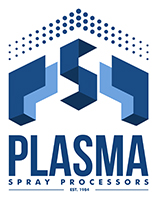Industry
Coating Application Areas
General Areas where coatings are used for Protection of engineering components.
- When component is in relative motion with another and under load causing it to scuff or tear
- When component is interacting with one another causing gouging or cutting of its surface.
- When component is being impinged upon by liquid or gaseous stream containing particles causing erosion.
- When component is being deformed because of cavitation.
- When component has small oscillation or vibration motion causing it to fatigue
- When a component is prone to corrosion
General areas where coatings are used for providing functional properties to engineering component.
- When component requires enhanced electrical isolation (non-conductive coating)
- When component requires enhanced electrical conduction (conductive coating)
- When component requires modified emissivity (emissivity coating)
- When component requires enhanced high temperature working ability (TBC i.e. Thermal Barrier Coating)
- When component requires close clearance control fits to be maintained (CC coating)
- When component required to be dimensionally restored (metal build up coating)
Application side
Physical Feasibility for Coating of components
- Coating is applied on components at our facility only. In -situ application not available.
- Majorly coatings are applied on outer dimensions of the components.
- Inner dimensions of components can only be coated provided the ratio of I.D to Length is around 1:1 at least.
- Components with complex shapes having line of sight can be coated.
- Coating thickness build up on component is recommend as 80 - 500 microns for ceramics and up to 2mm for metals.
- New components to be sent for coating should have a ground surface for area to be coated.
- Component's materials of construction like Mild steel, Stainless steels, Aluminium, Copper, Titanium can be coated only.
- Component's materials hardness to be sent for coating should be less than 50 Hrc to avoid improper bonding of coating material.
- Components especially old parts being sent for repair and remanufacture having wall thickness lesser than 5-10mm are not recommend for coating.
- Components subject to impact loading are not recommended to be coated.
- Aviation
-
Flow path liners, compressor housings, split fan casings, convergent plates, turbine blades, liners.
- Chemical
-
Oil and exploration shafts, plug valve, pump plunger, pump shafting and housing, shaft for mixer, pump sleeves, slurry pump casing, thermo wells.
- Steel
-
Deflector rolls, bridle rolls, sink (pot) rolls, coil unwinder rolls.
- Paper
-
Rewinder rolls.
- Printing
-
Impression cylinders, grippers pads, inkduct rolls, draw rollers, draw journals, strips, blanket cylinders,
- Power Plants
-
Boiler tubes, piston rods, pump sleeves, turbine blades.
- Oil Fields
-
Mandrels, knocker mandrels, spline mandrels, bearing mandrels, drive shafts, water pump shafts, ball valves, piston rods.
- Automotive
-
Crank shafts, piston rings, shifter forks, cylinder liner, connecting rods, pins.
- Glass
-
Moulds , plungers.
- Textile
-
Thread guides, godets, groove rolls, let down rolls, feed wheels, finish rolls, draw rolls, crimper rolls, friction discs, separator rolls.
- Pump
-
Pump sleeves, impellers, wear rings, plungers, casing rings, shaft sleeves.
- Shipping
-
Crank shafts, engine cylinders, valve stems.
- Cement
-
Agitator shafts, piston rods, pump plungers,.
- Compressor
-
Piston rods.



 +91 9820718722
+91 9820718722 